Duvet Cover | Throw Blanket | Windowpane Pillow | Curtains | Nightstand | Faux Florals | Lamp Base | Lamp Shade | Roman Shades
It’s possible that design guides are one of my favorite things to share. I’m on a mission to make design more approachable by breaking down an overall look into pieces or steps so that you can easily understand why something works and how to duplicate it.
Today’s focus is the nightstand. At first, you may think that there’s not much to it, but there is a method to achieving a well balanced and proportionate bedroom.
Let’s break it down step by step –
HEIGHT
The height of your nightstand should be level or 2”-4” above your mattress. This is optimal for both visual appearances and practical use. Nightstands that are shorter than your mattress tend to look too small for the space and nightstands that are 5 or more inches taller look more like side tables or dressers than nightstands. Not to mention it’s harder to see what’s on your nightstand at night or to reach across.
WIDTH
The width of your nightstand depends on a few factors.
First take into consideration the size of your bed to determine the ideal width of a nightstand –
-
Twin: 17”-20”
-
Queen: 21”-30”
-
King: 31”+
These width ranges are a good place to start to ensure you’re keeping your proportions right. That being said, there are some exceptions to the rule. For example, if you have two twin beds with a nightstand in between, the wider the nightstand the better. If you have a window above the nightstand or a large amount of wall space next to the bed, you can adjust the width accordingly. See the next two photos for example.
FILL THE VOID
Consider the space between the bed and the corner of the wall to help determine the width of your nightstand. If there’s less than 46” between the edge of the bed and the corner of the wall, I like to fill roughly 2/3 of the wall with a nightstand. This eliminates dead space between the nightstand and the wall.
If the wall space is more than 46”, consider adding a plant to the corner to fill the empty void rather than getting a giant nightstand. Refer back to the size chart above to pick a nightstand width and add something with height in the corner. This keeps proportions right without having a massively long nightstand or an awkward empty corner.
CENTER IT
If there are windows on either side of the bed, I like to center the nightstands below the windows. This keeps the room symmetrical.
GAP
Leave approximately 3”-6” between the edge of your bed and your nightstand. This provides a visual gap between the bed and nightstand, but keeps it close enough so that you’re not reaching every time you need to turn off the lamp.
NIGHTSTAND SHOPPING
NIGHTSTANDS UNDER $200

NIGHTSTANDS UNDER $500

Leave a Reply Cancel reply
DO YOU WANT
The Inside Scoop
Where behind the scenes, exclusive advice, and candid conversations are sent straight to your inbox every week.
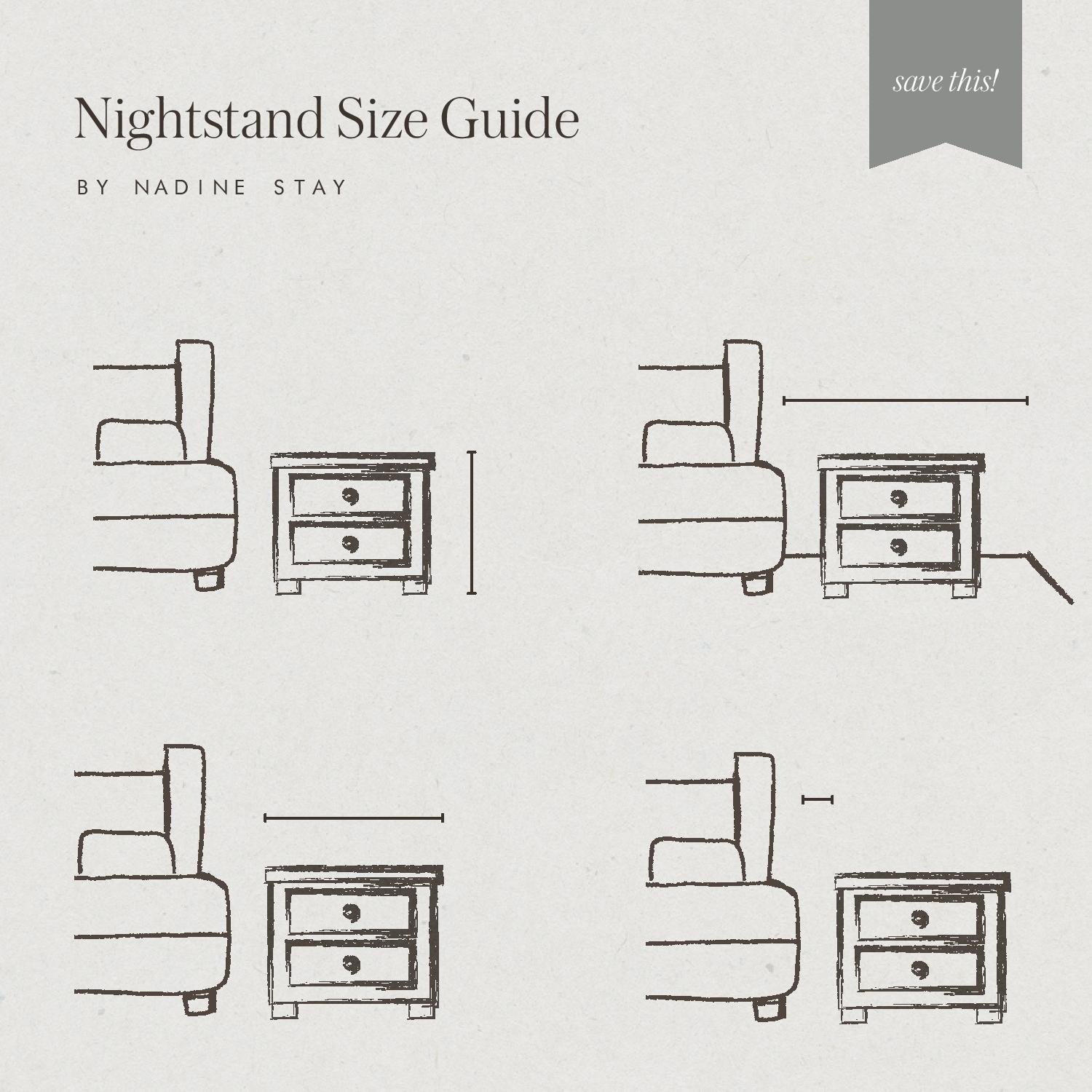
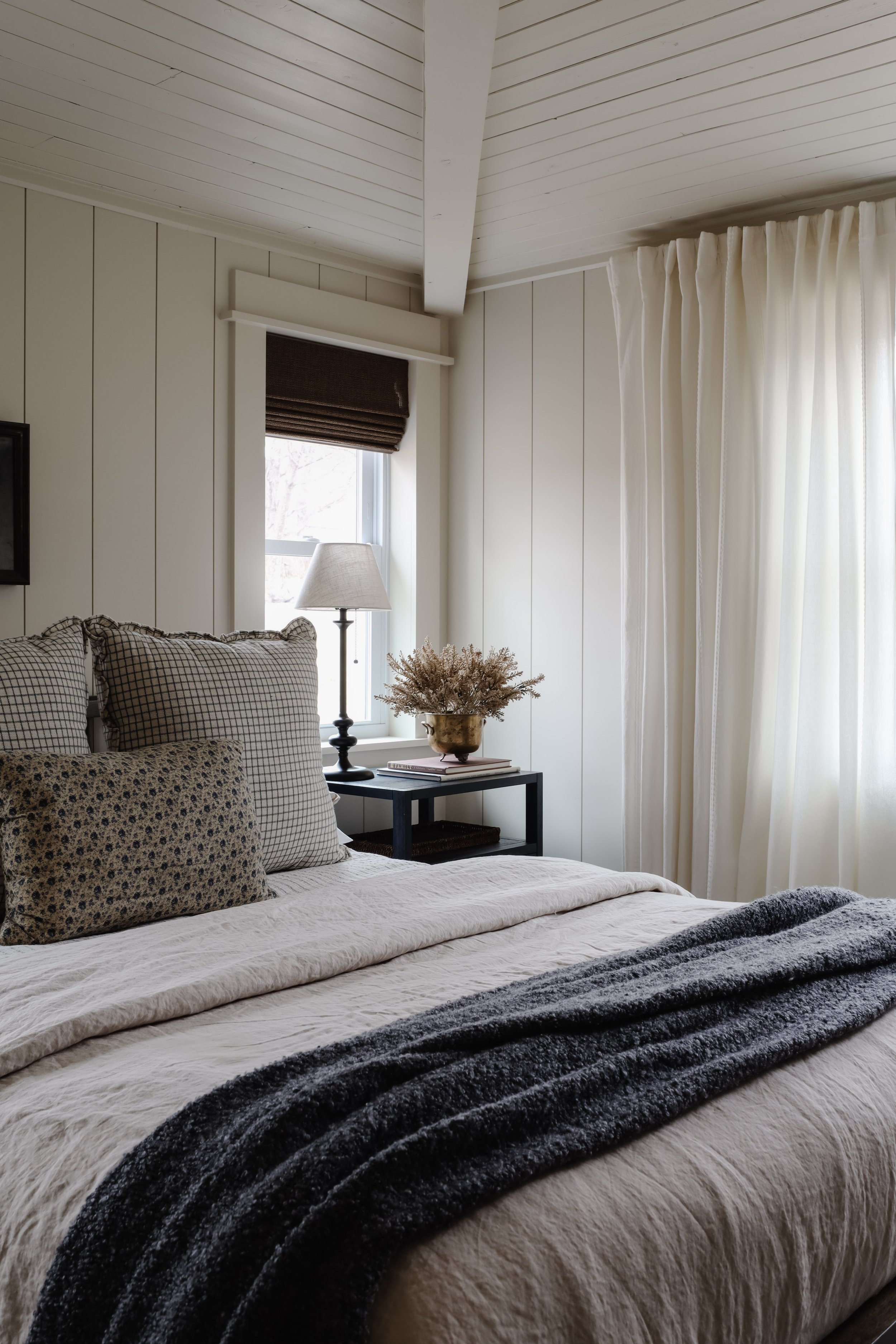
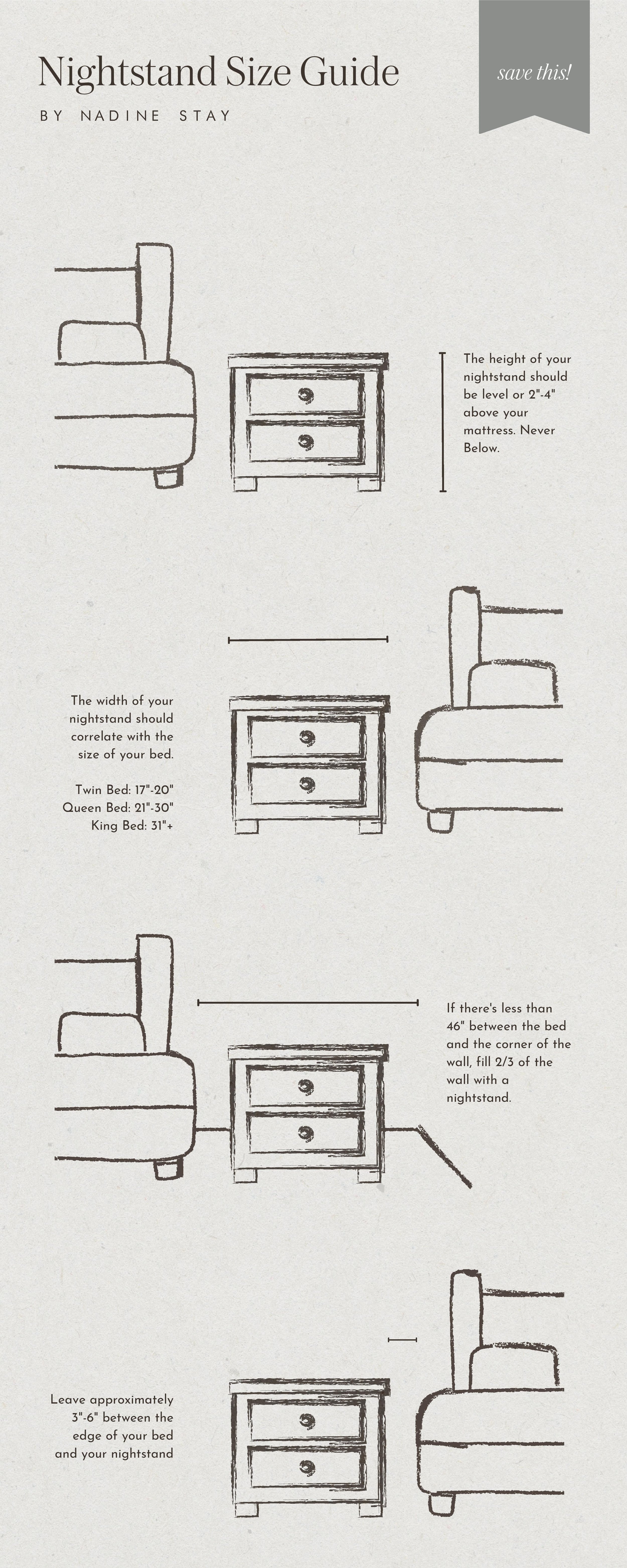
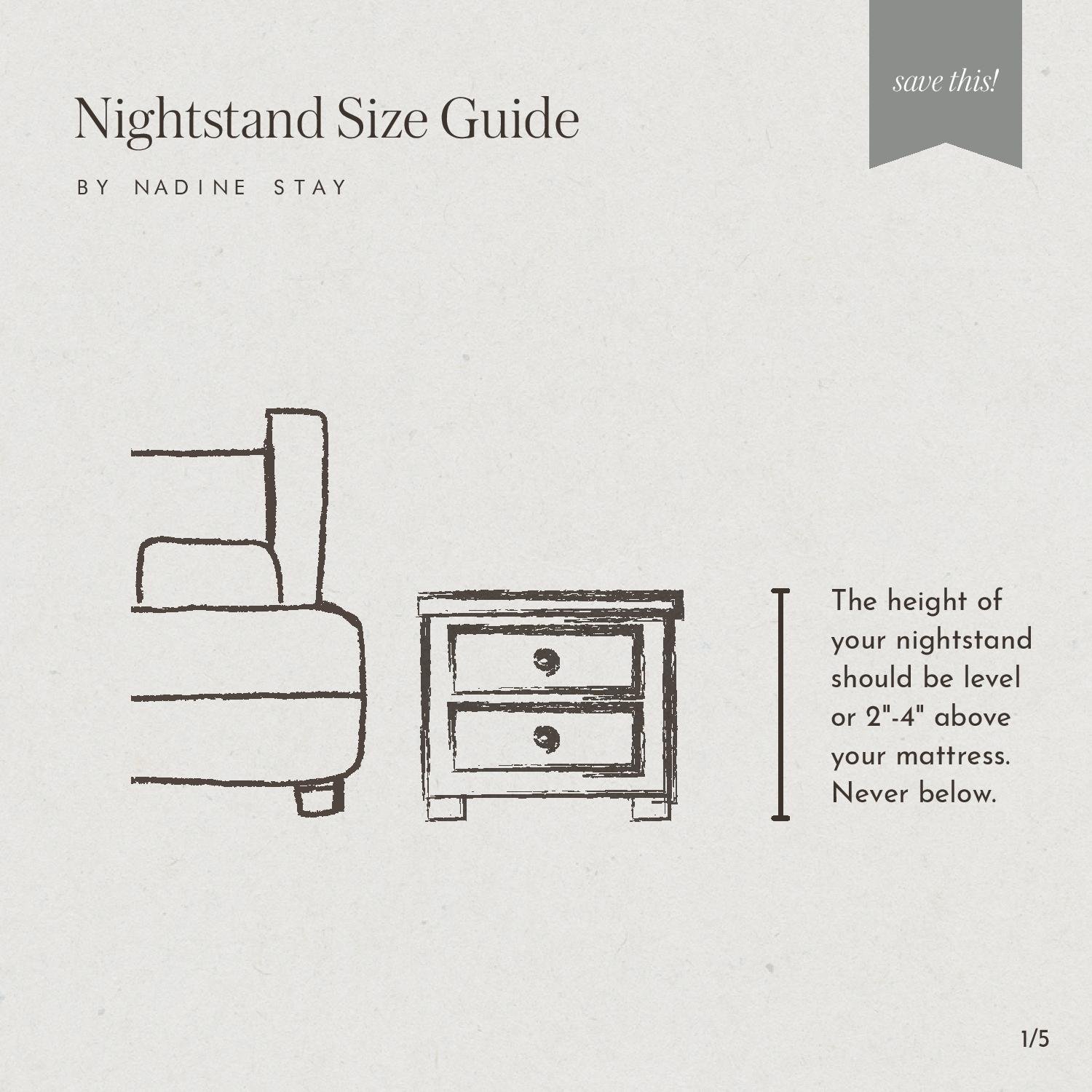
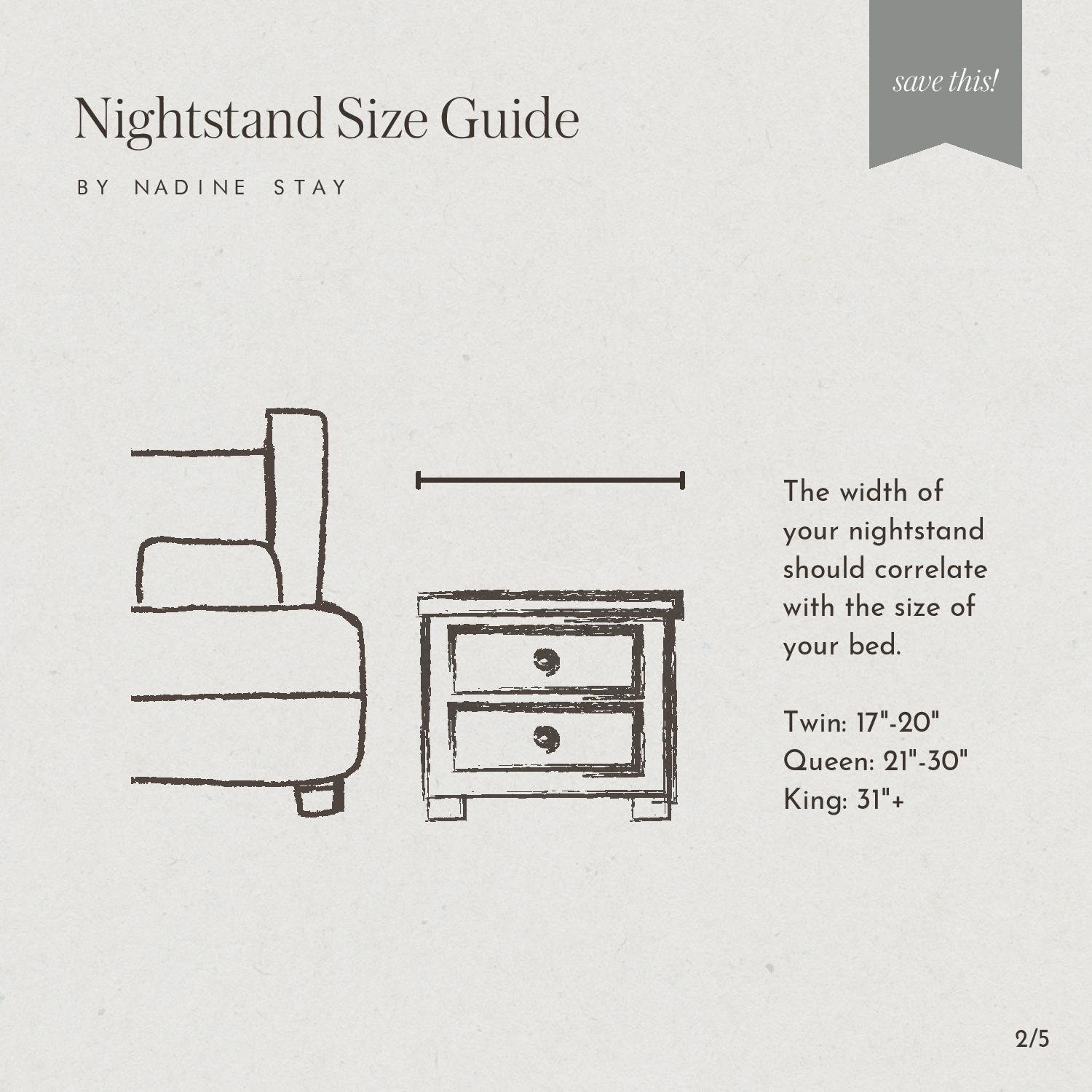
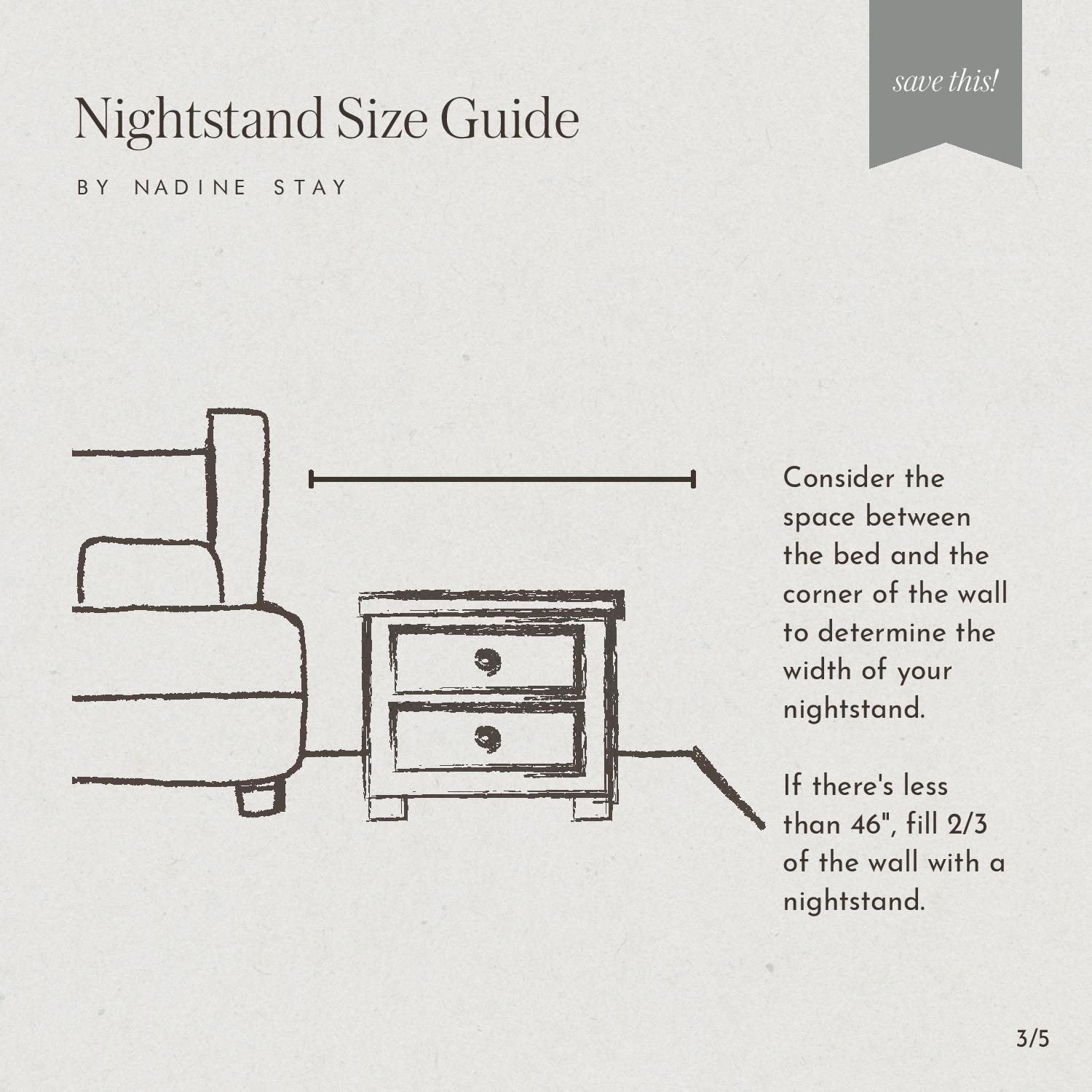

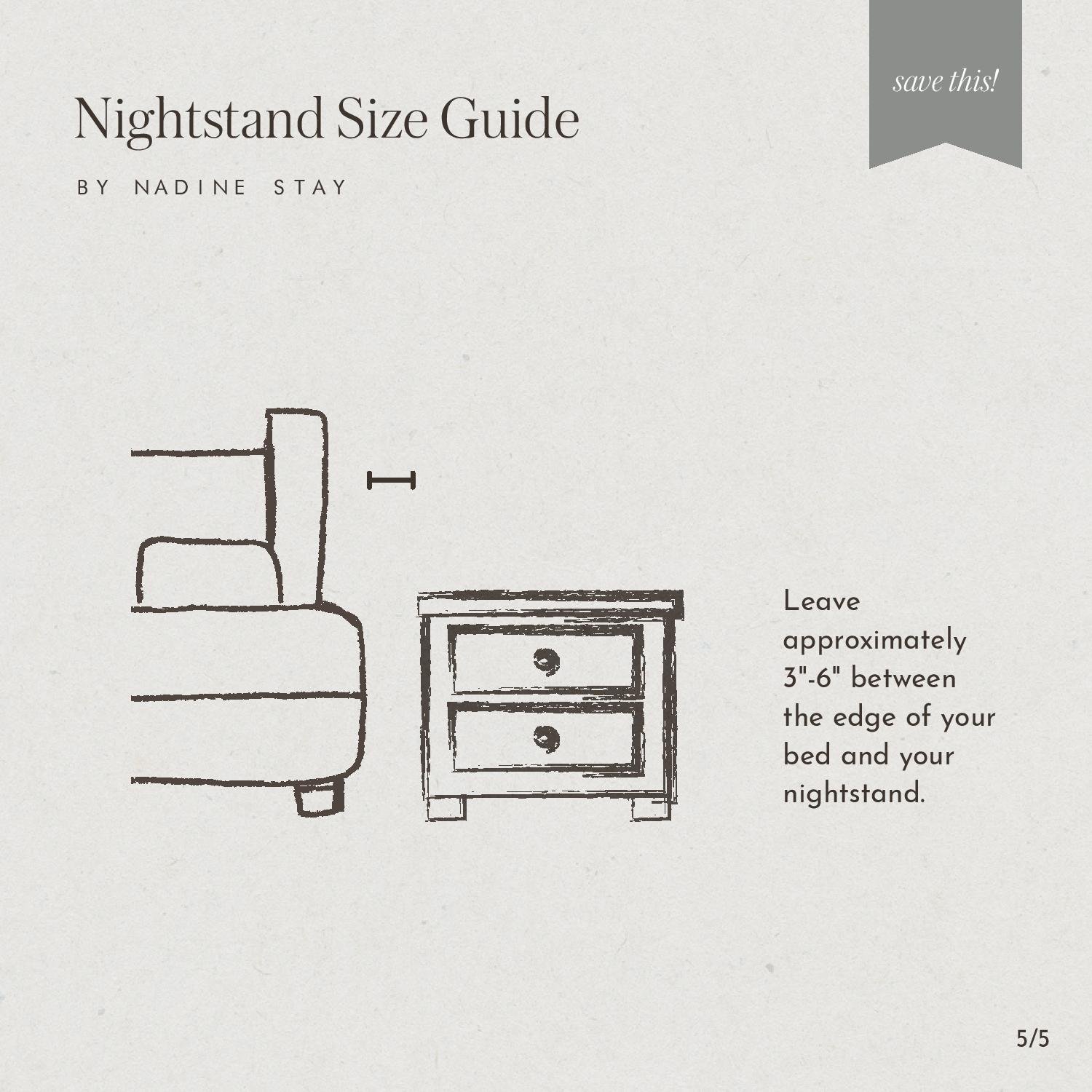
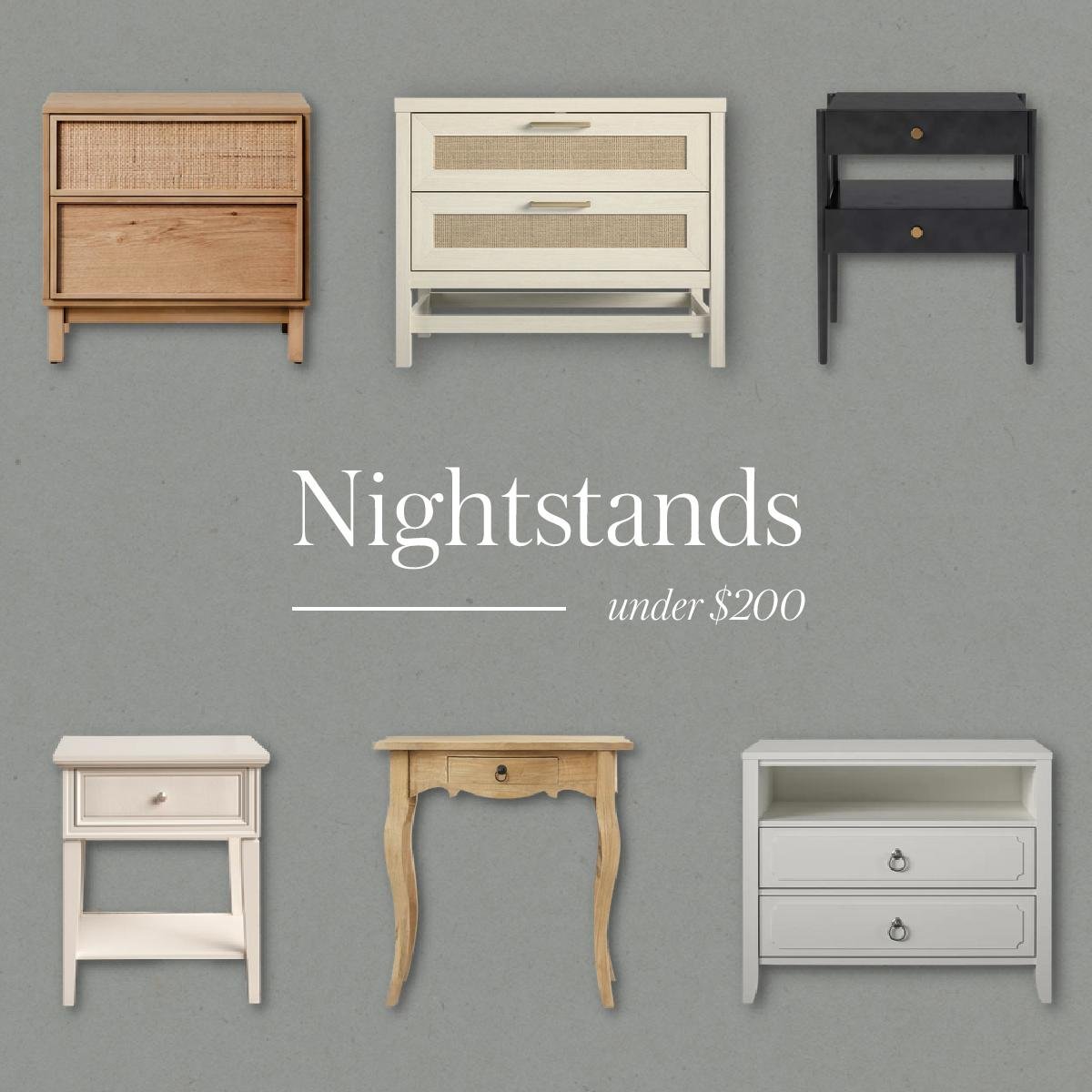
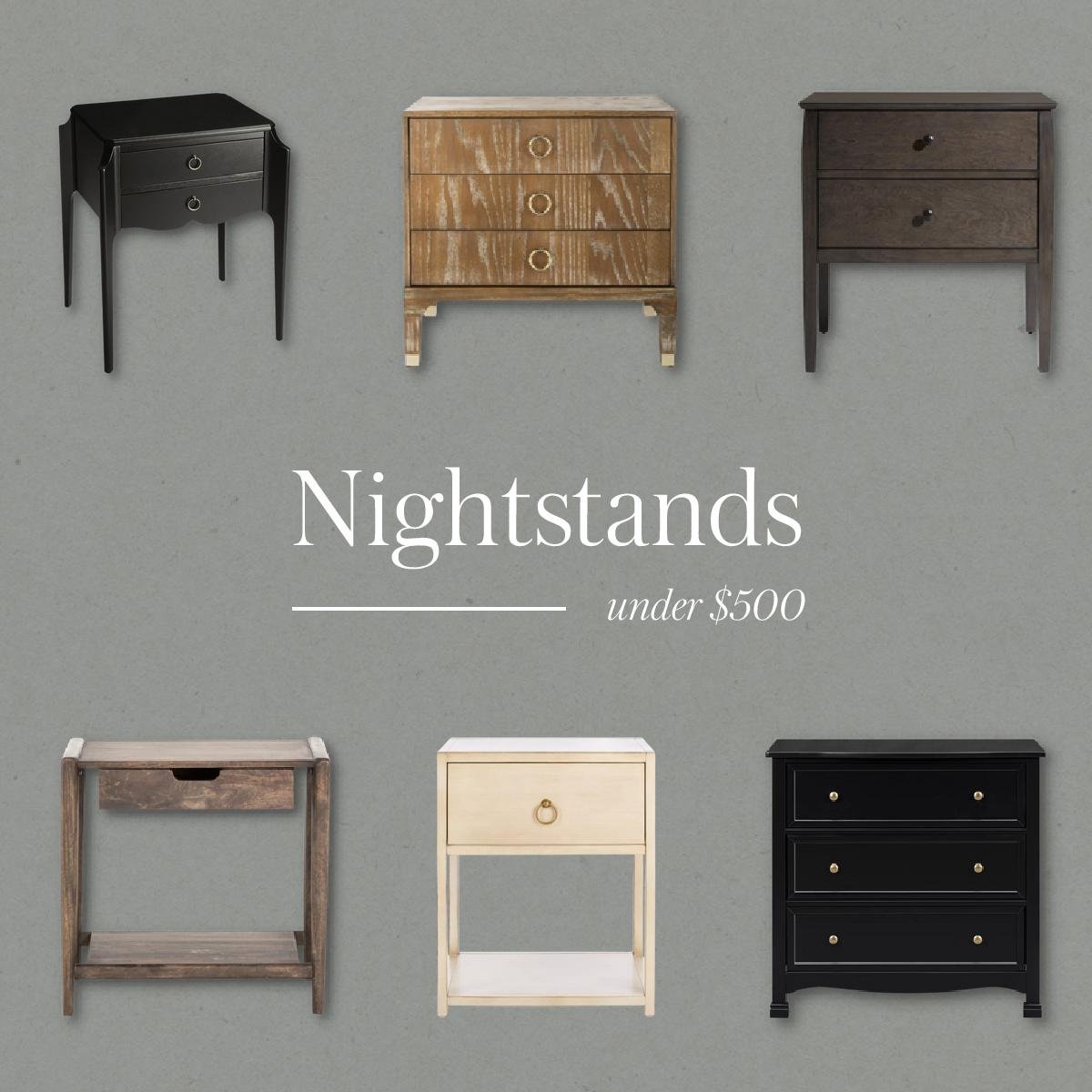
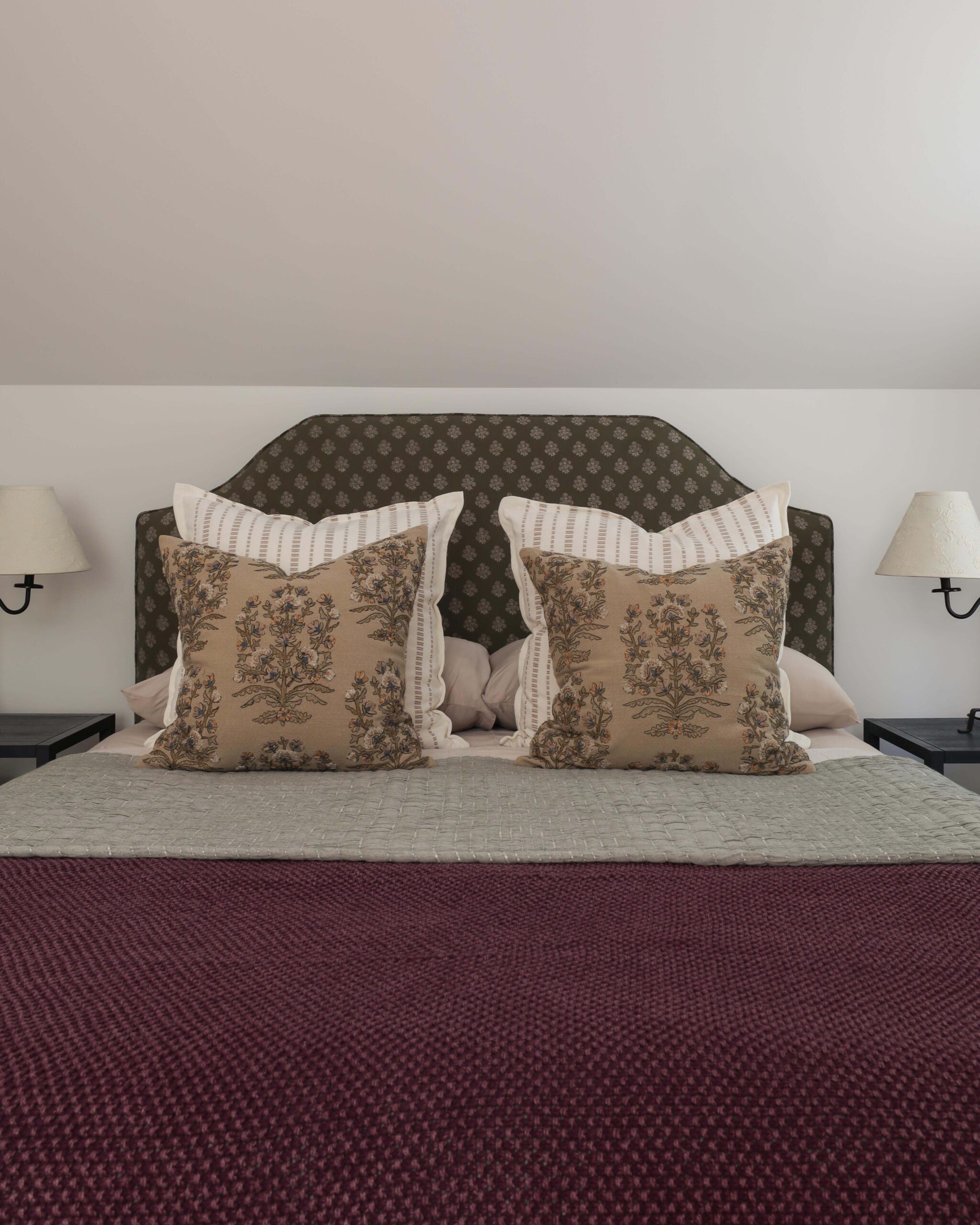
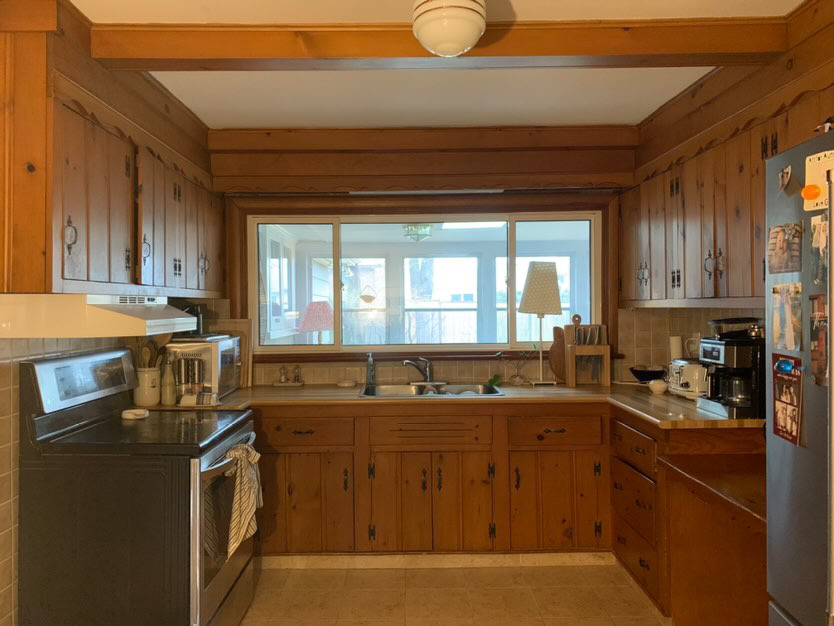
This was a very informative article. Thank you!!
So happy it was helpful! 🙂
Just discovered your Blog and I really love the Guides and just plain ole “Dos ans Don’ts” without all the other fluff that are typically in blogs. Thank you!!!